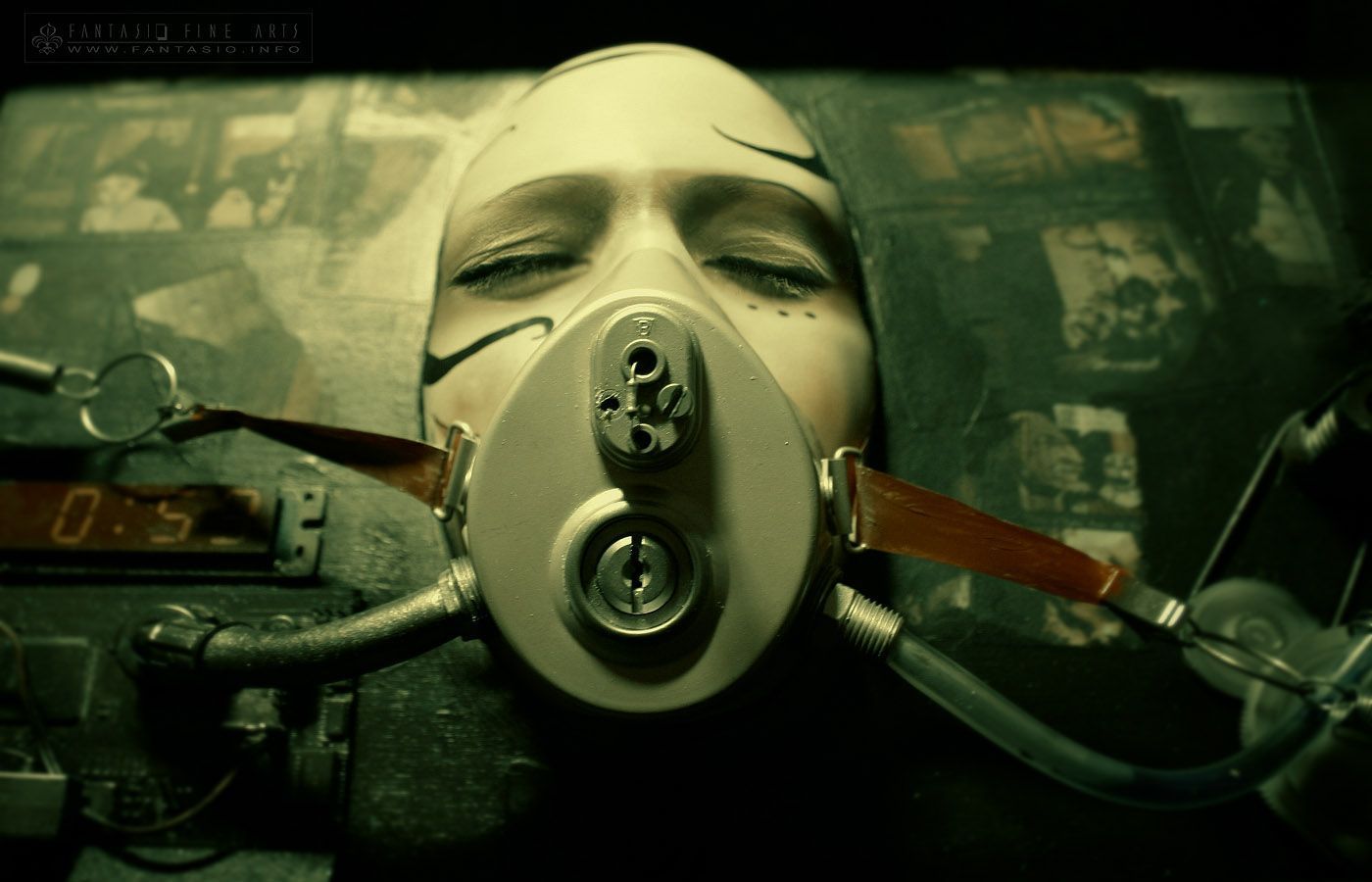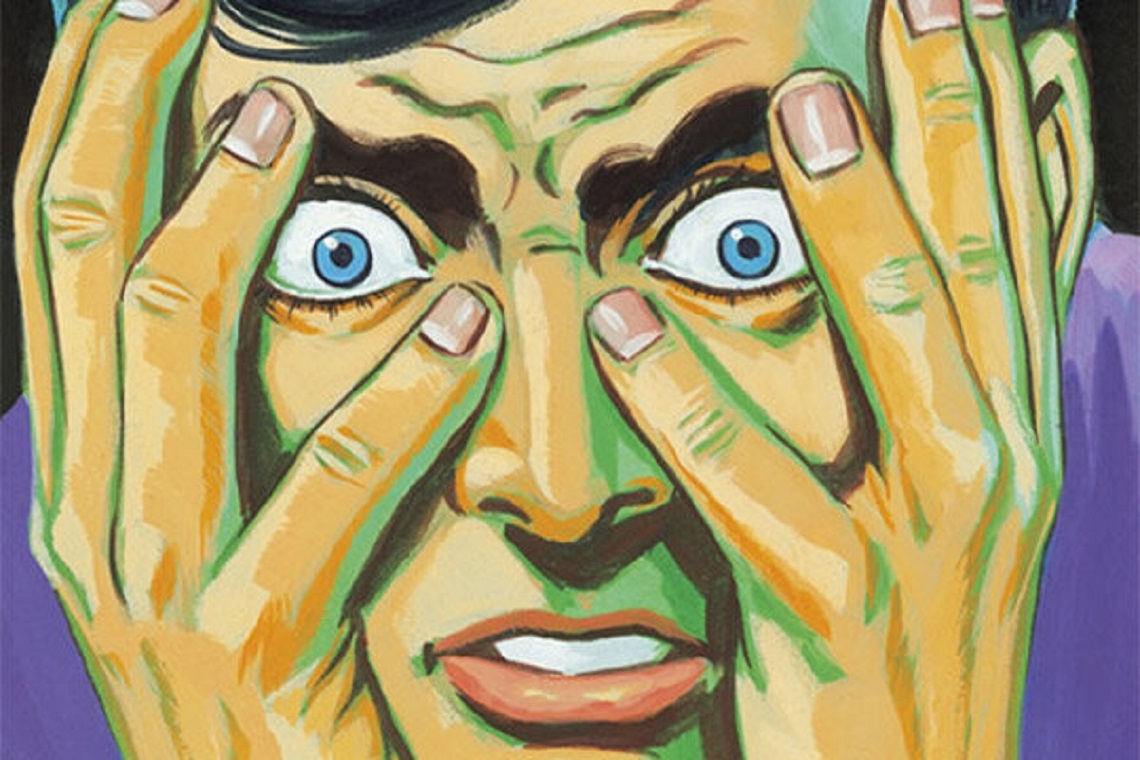Our default setting for understanding both neurotic and psychotic states of mind is the ‘error paradigm’ – we see what is going on in terms of an error to be corrected, if at all possible. In a wider context, we have this same approach to pain in general – pain is seen as something that is ‘wholly negative’, something that has no value in it at all, and so our own interest is in ‘how to make it go away’. The approach might seem reasonable enough – who wants to be in pain, after all – but when we look into it we see that looking at pain as nothing more than a biological error-signal is a cultural attitude more than anything else. In the West we see pain as being ‘meaningless’ in any deeper sense and this would seem to be the result of the way in which we understanding the world in a purely mechanical way, i.e. in terms of a machine. This is the metaphor we use to understand the world, and it also informs our understanding of ourselves.
Other cultures, as Ivan Illich points out, do not subscribe to a ‘meaning-free’ paradigm of pain, seeing pain has both an essential part of what it means to be a human being, and being meaningful – in a deep way – in itself. The consequences of seeing pain and mental suffering in the way that we do are that, if we can’t ‘fix’ the pain or suffering then we view our experience as being ‘useless’ or ‘without value’ and we thus become alienated from ourselves in a very insidious way. Seeing pain, of whatever sort, as something that ought to be eliminated from life is however ridiculously naïve – the idea that we could grow or learn without experiencing the difficult side of life is of course deeply mistaken. It is the hardships we go though that make us who we are and to live without hardships (by secluding ourselves within some sort of artificially-managed environment) could only result in the production of correspondingly artificial human beings, strangely-distorted people without the capacity to deal with any sort of challenge. The anaesthetic society doesn’t allow us to grow as people, in other words.
Seeing neurotic or psychotic distress as being ‘error’ rather than something that might have some value means that we only study what is going on in order to get rid of it – we have no genuine interest in the actual process that we are being faced with. We have no philosophical interest, only a narrow technical one. Amazingly, the professions whose job it is to deal with mental distress have no actual curiosity in what is going on – our entire attitude is to say that ‘it is wrong’ and must be normalized or corrected. We maintain this attitude despite the indisputable fact that a disproportionate number of humanity’s great thinking and artists have suffered from what we use to call ‘mental illness’. As Erich Jantsch has pointed out in The Self-Organizing Universe, our best insights into reality and creative breakthroughs come from those rather odd individuals who live on the far-flung fringes of what is considered normal. As Jantsch also points out, ‘Evolution is never total adaptation’ and yet the crucial point here is that we persist in viewing ‘total adaptation’ as the very pinnacle of mental health, and anything that departs from the equilibrium value as being a ‘meaningless deviation’ or ‘error’. This is our current viewpoint on the matter – we define mental health or wellness normatively, despite the fact that in the life of the individual (as opposed to the group or society as a whole), to approximate normality always means not to grow as a person. Normal isn’t healthy, in other words, because it isn’t you – it’s an artefact.
If we stopped looking at everything out of the narrow ‘adapted mind or framework’ (which is like a little box we are afraid to step out of) then we would see that both equilibrium and non-equilibrium states have a part to play in what we call ‘mental health’ or ‘mental well-being’. Change (or instability) isn’t the enemy, in other words! We started to see things this way in the mid nineteen eighties with the scientific paradigm-shift which was chaos and complexity theory – for the first time we started to see that groundless instability is at the heart of everything and that it generates diversity and growth, which rule-based order cannot. As James Gleick, author of Chaos – Making a New Science says, “Everything we care about lies somewhere in the middle, where pattern and randomness interlace.” With regard to the world of mental health and psychiatry however, we have yet to take this on board. In this most conservative of worlds we insist on not seeing the value of errors – even though it is these errors (or random fluctuations) that save us from the deadly trap of over-adaptation. What is life without creative chaos, after all? What kind of life is it that is afraid to explore and experiment beyond the realm of the known?
Both the neurotic and the psychotic realms have something valuable to teach us, as we could very easily see if only we could open our eyes a bit and wake up out of the normative trance that we’re culturally stuck in. At the neurotic end of things we suffer from too much stability, too much adaptedness to some pattern or other, and the terrible lack of perspective (actually blindness) that this brings with it. The most obvious example of this is what is called obsessive compulsive disorder which is where we become slaves to routines, slaves to very narrow ways of seeing and behaving the world. OCD is essentially a very stable pattern of behaviour that exists for its own sake rather than serving some greater good. Even though no point is served by the behaviour we are driven to repeat it and the motivation that drives us is as always ‘to fix a problem’, even though no problem is actually being fixed. OCD is a pure distillation of ‘purposeful behaviour’, the only thing here being that the ‘problem’ that we are trying to fix can’t be fixed and so it is the escalating ‘fixing’ behaviour itself that becomes the problem. The same can be said of addiction, which is closely related to OCD – in addiction it could be said that the problem we’re trying to solve is ‘how to feel good all of the time’ (which turns out to be the same thing as the problem of ‘how to avoid life’, even though we don’t of course see it as such). This is – very clearly – an impossible problem to solve and so we end up repeating the behaviour (whatever it is) over and over again in the futile attempt to reach the goal. We never do reach the goal and so we are obliged to keep on reiterating the dysfunctional problem-solving behaviour, even though it is now this goal-seeking behaviour, and the suffering that it is causing us, that has become the problem.
In OCD we could say that the hidden purpose is also to ‘avoid life’ and this is of course the hidden agenda behind all neurosis. Jung stated that ‘neurosis is always the avoidance of legitimate suffering’ and this may look like a different thing, but life is inseparable from suffering as life is always a demand on us to be something different to what we take ourselves to be. We have an idea of ourselves that is comfortable and life always threatens that idea and so we move into the defensive or neurotic mode, which then creates a displaced and therefore camouflaged form of suffering – we then get engrossed in trying to solve the displaced / surrogate form of suffering and so get ever and ever further from seeing what the conflict is really all about, which is ‘trying to protect a false idea of ourselves’. Life wouldn’t be suffering in the way that it is if we weren’t dedicated without knowing it to defending a false version of ourselves but because our unconscious allegiance always is to the idea or construct (rather than to the truth of how things are) life is always ‘against what we want’. We avoid the pain that is caused by life operating in a way that is essentially ‘against our will’ (i.e. in a spontaneous way!) by escaping into a narrow mind-produced fantasy, and then the next thing is this controlled fantasy itself starts to be painful for us, only this time it is ‘surrogate pain’ (i.e. neurotic suffering). OCD can this be seen as our last ditch (and visibly futile) attempt to fix the pain of our fantasy existence by using some kind of ‘magical method’.
The motivation to avoid life is always disguised – it is always disguised simply because if it wasn’t then it wouldn’t constitute avoidance. One can hardly be honest about lying, after all! In OCD it is possible to engage in the routines because this is satisfying but – much more often – we engage in the rituals or routines because we feel that we have to. There is often the explicit perception that by obeying the routine we are warding off some catastrophe – we may know what we think the catastrophe is or we may not but the one thing that we can’t see (because our focus is too narrow) is that it is not any particular scenario that we are trying to avoid but ‘the whole thing’. As is the case with phobias, the rejected aspect of life shows itself in the thing that we are terrified by but we don’t see the object of our phobia as ‘life itself’. We just see it as ‘the thing we are irrationally frightened by’. We could bring in anxiety at this stage and make the point that anxiety is very clearly about solving (or trying to solve) some problem or other. Actually, in the case of anxiety, we can see that what we’re talking about here is a manifestation of ‘failed’ (or ‘failing’) problem-solving – it doesn’t matter what problem we are trying to solve if we are anxiety because no matter what it is we are still going to get this doomed feeling, on some level or other, that we’re not going to be able to solve it…
The essential problem that we are trying to solve in anxiety is the problem of life’s inherent uncertainty – as anyone suffering from clinical anxiety will tell you, if they could be 100% sure of something then they wouldn’t be anxious! Anxiety lies in the not knowing, in other words. The inherent or irreducible uncertainty of life turns out – under further examination – to be the same thing as life itself because it is the nature of life to be uncertain – if it wasn’t uncertain then it wouldn’t be life! We don’t generally know that we’re ‘afraid of life’ because we’re usually too caught up in the particularities; our rational vision only takes in the particular cases after all – that’s all it is able to take in. The rational mind works in terms of categories and categories – obviously enough – are always partial. Even when we bring in large numbers of categories – in complex arrays – we still can’t apprehend the whole picture – it just isn’t possible to apprehend the whole in terms of fragments, no matter how many fragments we might have. Reality is not a jigsaw and it can’t be pieced together bit by bit; either we see it all in the one go or we don’t see it at all! Because we can’t perceive Wholeness (when we’re in ‘rational mode’) but only the part we have to use the part as an analogue of the whole. We get anxious about little things going wrong because deep down we’re anxious about the ‘big thing’ but we transfer or displace the insecurity onto whatever trivial issue is going on for us at the time. That’s what we ‘hang the coat on’. The closest we get in anxiety to seeing the truth is when we are suffering from generalized anxiety and then we are very likely to just come out with it and say that we are ‘anxious about everything’. When this happens we are no longer under the sway of the illusion that it this trivial outcome or that trivial outcome that is worrying us; we can now see that there is nothing that we aren’t (or couldn’t potentially be) anxious about. At this stage the hope of ‘solving the problem’ dwindles away to practically zero, but it is still there in some form. Even though we know we haven’t a hope in hell of ‘fixing everything’ (because we don’t even know where to begin) we still very much feel that we should fix it, or should at least try to fix it, and so we are still caught up in the neurotic struggle.
If we move on now to depression, we can say that depression marks a ‘giving up’ – on a very profound level – of our ongoing (and ill-fated) attempt to ‘fix the problem of life’. It’s clear that we are no longer trying to fix the problem of life because we are no longer trying to do anything! In order to appreciate this point it is helpful to bring to mind the existential philosophers’ key assertion that the reason we throw ourselves into the purposeful endeavours of life in the way that we do is not because of the intrinsic worthwhile-ness of these endeavours (or projects) themselves, but in order to distract ourselves from the unanswerable core of uncertainty that is to be found right at the heart of everything. The purposeful life is ‘uncertainty avoidance’ pure and simple; we do what we’re doing to preoccupy ourselves so we don’t have to think about the bigger picture, in other words. This is equivalent to Chogyam Trungpa’s statement that the samsaric worlds or lokas correspond to the ‘styles of distraction’ that we are using to distract ourselves from seeing open-ended reality. This doesn’t mean that purposeful behaviour is always a distraction from reality however – you could be sitting down in the porch, relaxing, and then get to chop a load of wood for the fire. Then you sit back down and chill out again. None of this is distraction since you are doing what you’re doing because you need fuel for the fire. You are chopping wood mindfully, in other words! But what we usually do is a far cry from this – we do one purposeful thing after another and join them up seamlessly to make a continuous structure. This continuous structure is like a train track of logic that allows us to go right through the day without stopping to deeply reflect. Even when we relax or go on holiday or engage in some pastime we make a job out of it! Even when we meditate we do so for a reason – it’s still doing something that’s ‘fitting into out framework’…
Life – the way we generally live it – is stitched together by thought – it all fits together neatly in the one logical context, it all makes sense in terms of an overall framework of thinking. This means that it’s all purposeful – everything we do during the course of the day equals ‘the activity of the purposeful self’. Our project is this ‘purposeful self’ therefore, and so it is the self with all of its goals and aims and plans and purposes that constitutes the ‘distraction from the core uncertainty of life’. ‘And what’s wrong with this?’ we might ask – ‘what’s wrong with living life on the basis of our plans and thoughts and aims and goals, etc?’ The very simple answer to this is that – if we are living this literal-purposeful life in order to distract ourselves from open-ended reality – then we are living dishonestly. We’re not living for the sake of what we say we’re living for – that’s just our cover story. Really, we are throwing ourselves into the narrative that we have made for ourselves out of fear – because we don’t want to see the bigger picture, which has no ‘narrative’ in it!
One way to talk about depression is, therefore, to say that it is what happens when we start to gain insight – unwillingly, needless to say – into the dishonesty or inauthenticity of what we’re doing. We can no longer believe in our own narrative, in other words. It no longer motivates us; it no longer effectively distracts us. It doesn’t actually distract at all because we’re just not interested in it – we can’t see any good in it! This is not to say that there is no good in our life – merely that we were living on a false basis and so we were missing it. We are living a sham and the sham is all we know so when we see that the sham is a sham the disillusionment is complete and all-consuming. The fact that our ‘purposeful life’ no longer has the power to motivate us is universally seen as a very bad thing indeed but that is only because we ourselves are so very heavily invested in it. We don’t know anything different and we’re also afraid to know of anything different. The game is everything to us and the very last thing we want to know is that the game is a game. But all the same depression marks a step towards letting go of neurotic conflict because we’re no longer trying to ‘fix it’. We don’t think it’s fixable. In anxiety we don’t think it’s fixable but we keep on trying to do so all the same, but in depression we know it so deep-down that we stop trying. There is a huge amount of pain in this because – despite the fact that we can no longer believe in our purposeful life – it is nevertheless true that we have invested everything in it. It’s all we know – our investment in it was total and there is no way that seeing this cannot hurt. What could hurt more than this? But to see this tremendous pain purely as the ‘error -signal of a brain gone wrong’ – as we do see it – is to completely miss the very great learning that is in it. Pain is never just a meaningless ‘error’ – it’s just that we don’t want to know what it means…
Art: Sin esperanza. Frida Kahlo, 1945






